To copy files over from a public or private FTP or HTTP(S) server, use the FTP/HTTP(S) import tool. It runs in the background on the Platform and does not depend on your local network speed. This allows you to multitask as your files are added to your project.
To import files from an FTP or HTTP(S) server:
- Navigate to the desired project.
- Go to the Files tab in the project.
-
- Click Add Files > FTP / HTTP, as shown below.
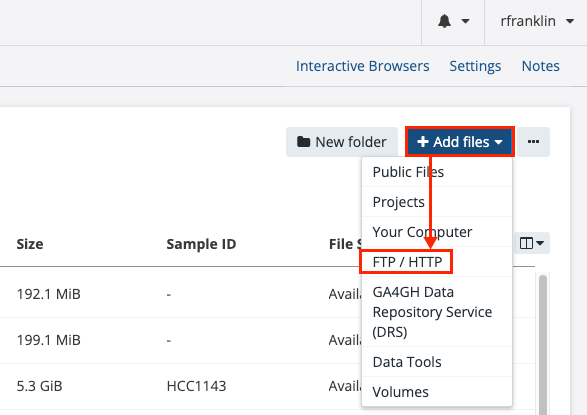
- Type in or paste the URL of the file(s) you want to import. You can also click Browse file to navigate to a text file on your computer that contains these URLs.
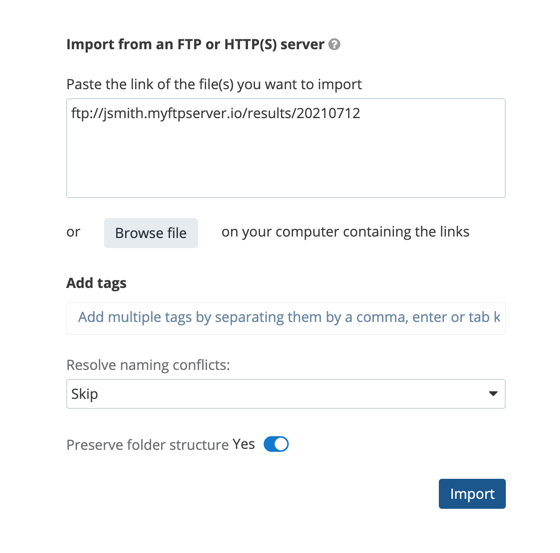
Types of uploads
You can upload a single file, a directory (in the case of FTP), or an index page (in the case of HTTP(S)).
You can also upload a list of URLs. They will all be uploaded in the same job.
- Once you enter a URL or select a text file, you will see the option to enter tags. Enter tags in the Tag files box. You can separate tags with commas or by hitting the return key. All tags which are already in the selected project will be autosuggested in the drop-down menu, as shown below.
Tagging files
You can also tag files as you upload them via the Uploader or via the command line.
Learn more about tagging your files in general on the Platform and how tags are beneficial to organizing your data.
- Resolve naming conflicts - Select the action to be taken if a naming conflict occurs. Available actions are Skip (default option), Auto-rename and Overwrite. Read more about naming conflicts resolution below.
- Preserve folder structure - If enabled, the imported items will be an exact mirror of the file/folder structure on the server. Otherwise, the items will be "flattened" when imported from the server, i.e. only files will be imported, with no folder structure.
- Click Import to start the upload.
- Click Import more files if you have more URLs to import. If you're finished uploading, click Done to close the dialog.
Track your progress
You can track the import progress under the import status icon on the right-hand side of the main menu.
When the upload completes, review your files in the Files tab of the project.
Accessing password-protected FTP and HTTP(S) servers
The FTP/HTTP(S) tool can submit usernames and passwords to the server. To do this, you should include the username and password in the links that you pass to the tool, using the standard HTTP syntax: http://username:[email protected]/sample/.
Pasting in a link formatted in this way will attempt to authenticate with the server example.org using the credentials username and password and then try to fetch everything that is hosted under the directory/sample/.
Resolving naming conflicts
Naming conflicts happen when you try to import an item (file or folder) from an FTP/HTTP server to a project's root folder or subfolder, where an item with the same name already exists. The list below illustrates the possible cases of naming conflicts and the way they are resolved depending on which option is selected in the Resolve naming conflicts dropdown:
- Importing a file that has the same name as an existing file at the destination path:
- Skip (default): The file won't be imported. This is the default behavior.
- Auto-rename: The imported file will be automatically renamed by adding a prefix (underscore and serial number).
- Overwrite: The existing file will be overwritten by the file imported from the server.
- Importing a file that has the same name as an existing folder at the destination path:
- Skip (default): The file won't be imported.
- Auto-rename: The imported file will be automatically renamed by adding a prefix (underscore and serial number).
- Overwrite: The file won't be imported.
- Importing a folder that has the same name as an existing folder at the destination path:
- The content of the folder that is being imported will be merged with the content of the existing folder, regardless of the option selected in the Resolve naming conflicts dropdown. Any conflicts related to files within the folders will be handled according to file naming conflict resolution rules described above.
- Importing a folder that has the same name as an existing file at the destination path:
- The folder and the files it contains won't be imported. This is the default, non-configurable behavior, regardless of the option selected in the Resolve naming conflicts dropdown.
The following table illustrates the entire naming conflict resolution mechanism:
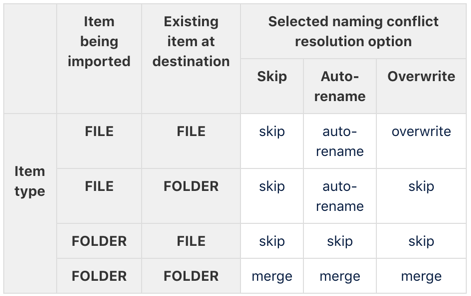
Check import status
To check the progress of your import, click the notification bell in the upper right corner.
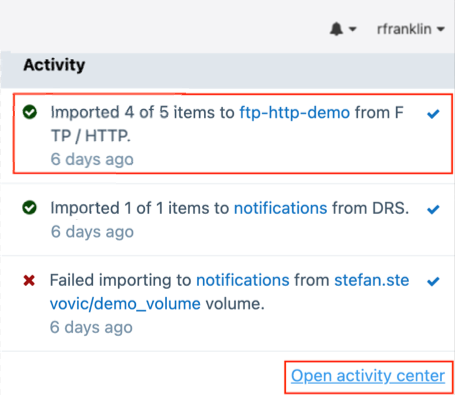
Click Open activity center to see more detailed information about each of the imports.
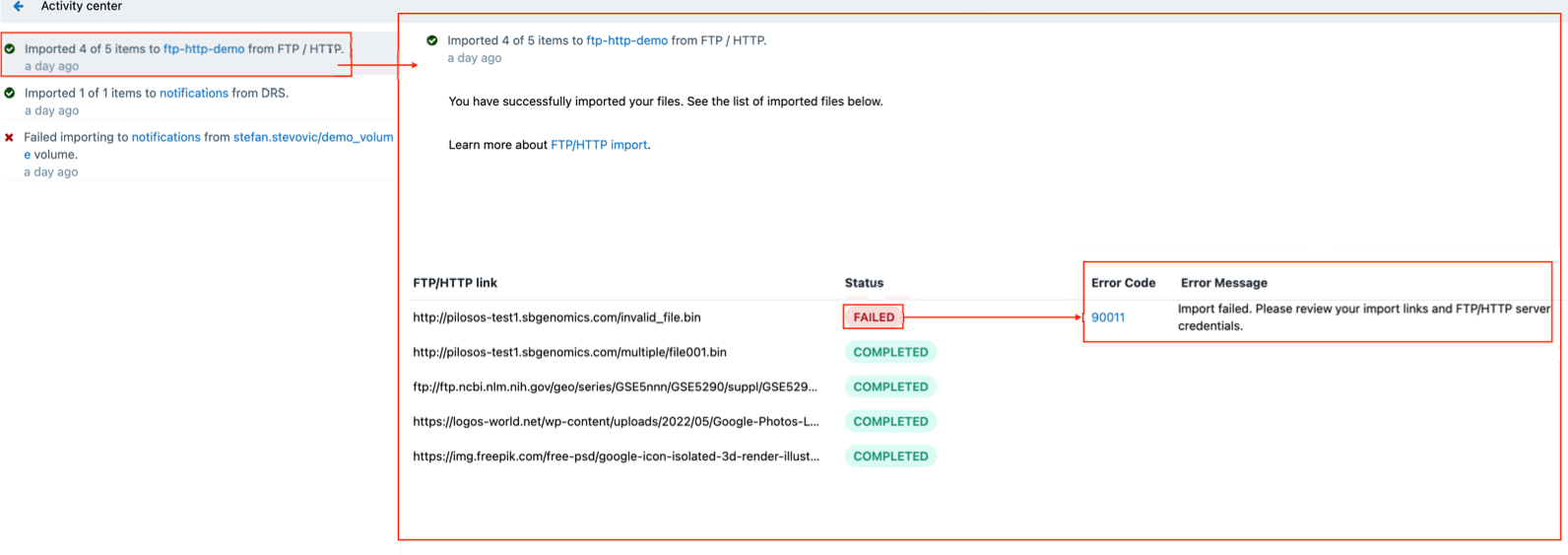
Click on an import in the left pane, and the right pane will show detailed information about that import including:
-
FTP/HTTP link - the link the file was imported from
-
Status - the status of the import for each of the files; in case of a failed import, the following information will also be available:
- Error Code - click to see detailed information about the error code
- Error Message - the description of the error
Troubleshooting
If the FTP import tool fails to import all the files whose links you provided, please retry by providing shorter lists of FTP links.
Updated about 2 years ago
